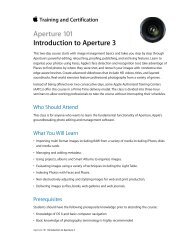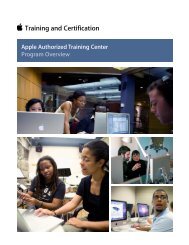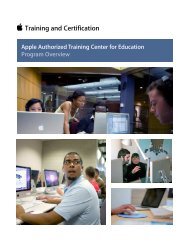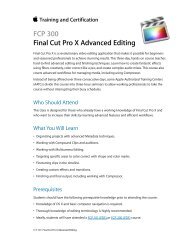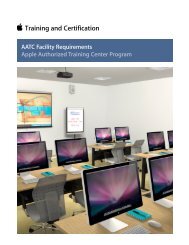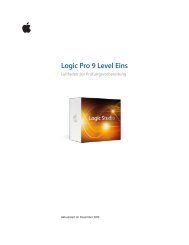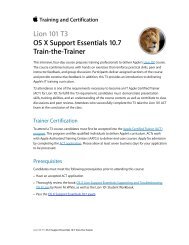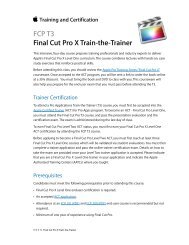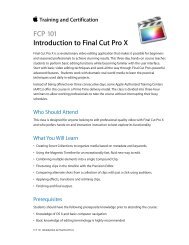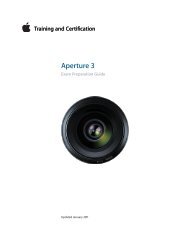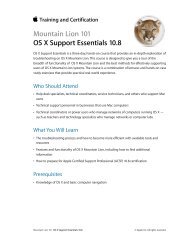OS X Support Essentials 10.8 - Training - Apple
OS X Support Essentials 10.8 - Training - Apple
OS X Support Essentials 10.8 - Training - Apple
Create successful ePaper yourself
Turn your PDF publications into a flip-book with our unique Google optimized e-Paper software.
<strong>OS</strong> X <strong>Support</strong> <strong>Essentials</strong> <strong>10.8</strong> Exam Preparation Guide<br />
• Given a Mac with <strong>OS</strong> X installed, secure the user environment.<br />
• Describe how to enable and disable the firmware password.<br />
• Describe the functions and features of the keychains in <strong>OS</strong> X.<br />
• Describe how to reset a user account password using an <strong>Apple</strong> ID.<br />
• Describe the privacy controls available for a user account.<br />
• Describe the security features offered by iCloud for Mac computers<br />
running <strong>OS</strong> X Mountain Lion.<br />
• Compare and contrast the methods for changing and resetting<br />
passwords.<br />
• Compare and contrast how each of these passwords function in <strong>OS</strong> X:<br />
login, firmware, resource, keychain, and <strong>Apple</strong> ID.<br />
• Compare and contrast the roles of keychains, keychain items, and<br />
keychain first aid.<br />
• Describe how resetting a user account password can cause the<br />
keychain and user account password to get out-of-sync.<br />
• Describe the requirements necessary for FileVault 2 to unlock accounts<br />
that were initially encrypted with Legacy FileVault.<br />
• Describe how the Firmware password feature prevents users from<br />
changing passwords for user accounts other than their own.<br />
Lesson Six review questions<br />
After completing Lesson Six, you should be able to answer the following<br />
questions.<br />
1. What are the five types of user accounts in <strong>OS</strong> X? How are<br />
they different?<br />
2. What are some security risks associated with each type of<br />
user account?<br />
3. What are account attributes?<br />
4. How can you limit a user account from having full access to<br />
all applications?<br />
5. What types of contention issues can occur when fast user<br />
switching is enabled?<br />
6. What security risk related to storage can occur when fast user<br />
switching is enabled?<br />
Answers<br />
1. Standard is the default account type; administrative users can<br />
make changes to the system; a guest user doesn’t require a<br />
password; sharing only users can access only shared files; and<br />
the root user has unlimited access.<br />
2. Standard user accounts are very secure, assuming they have<br />
good passwords. Administrative users can make changes that<br />
may negatively affect the system or other user accounts. A<br />
12



